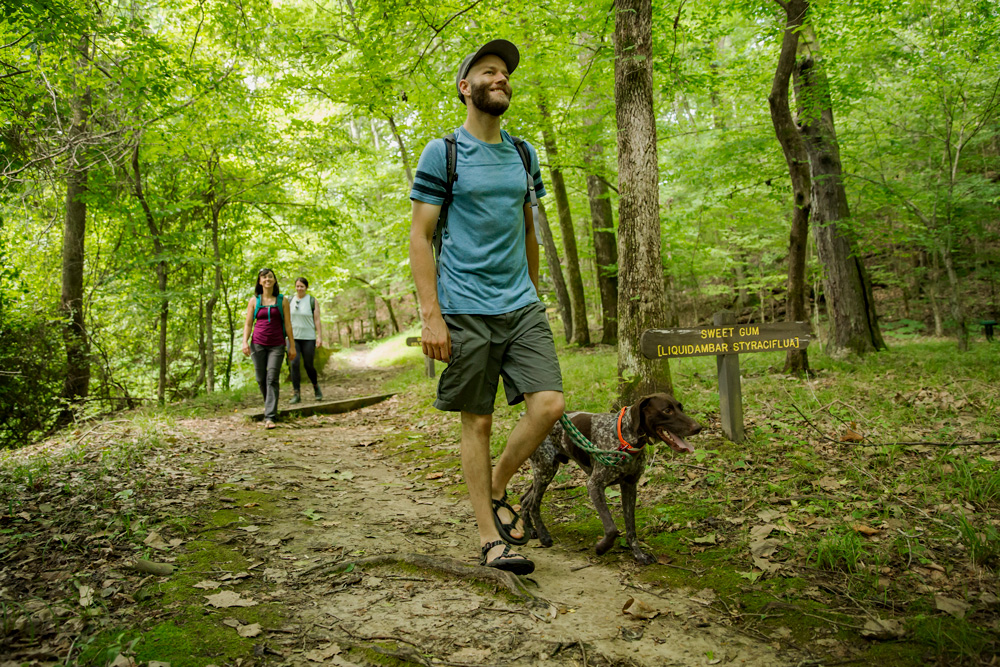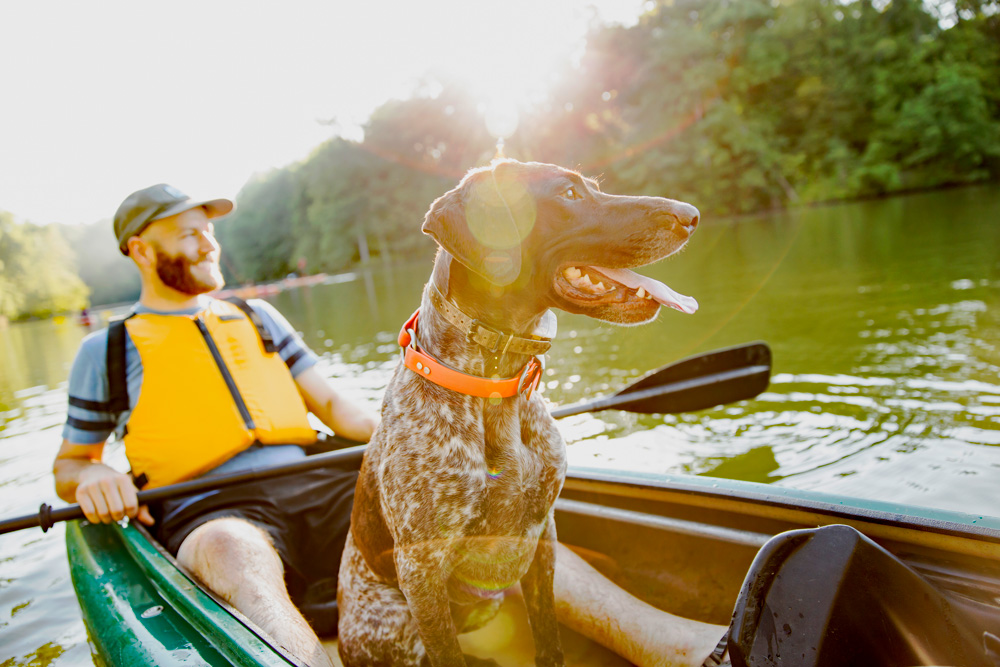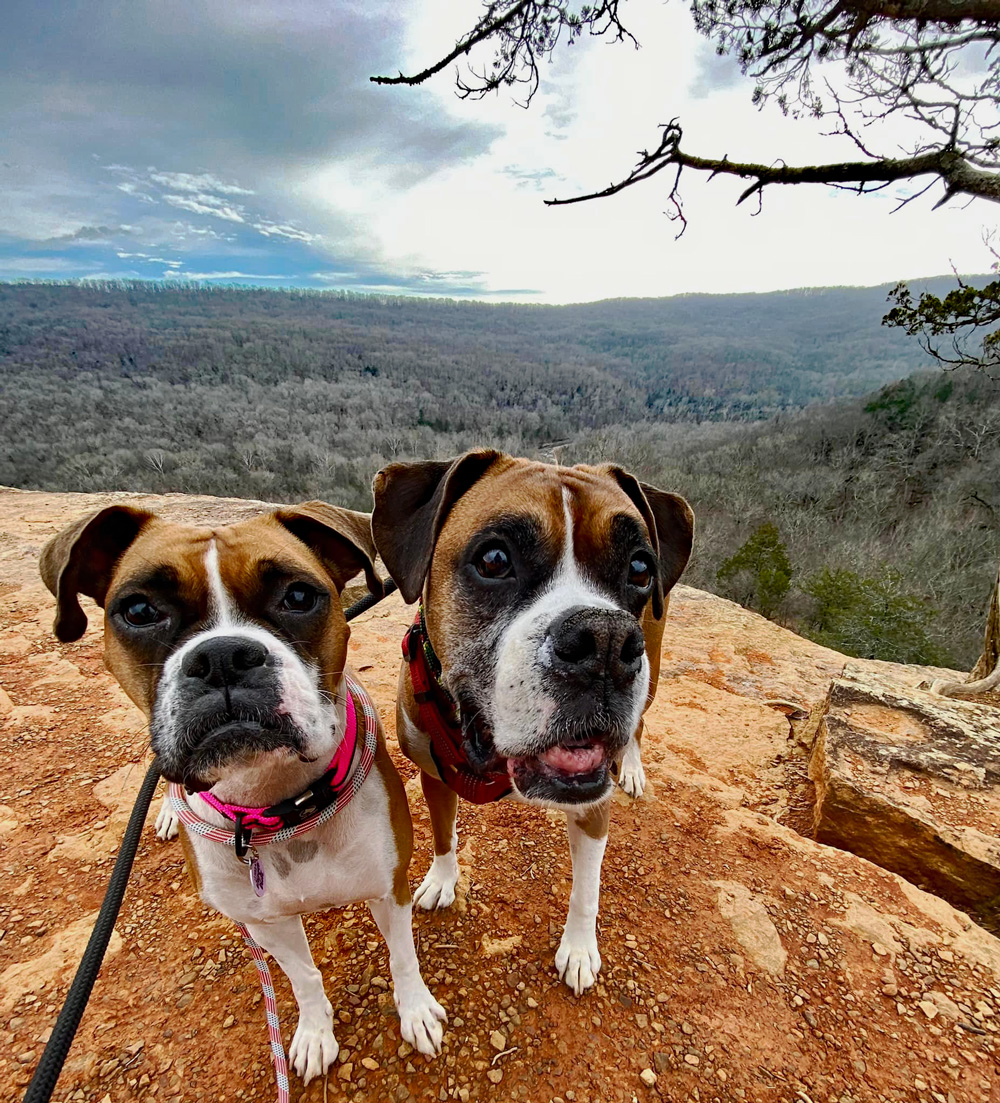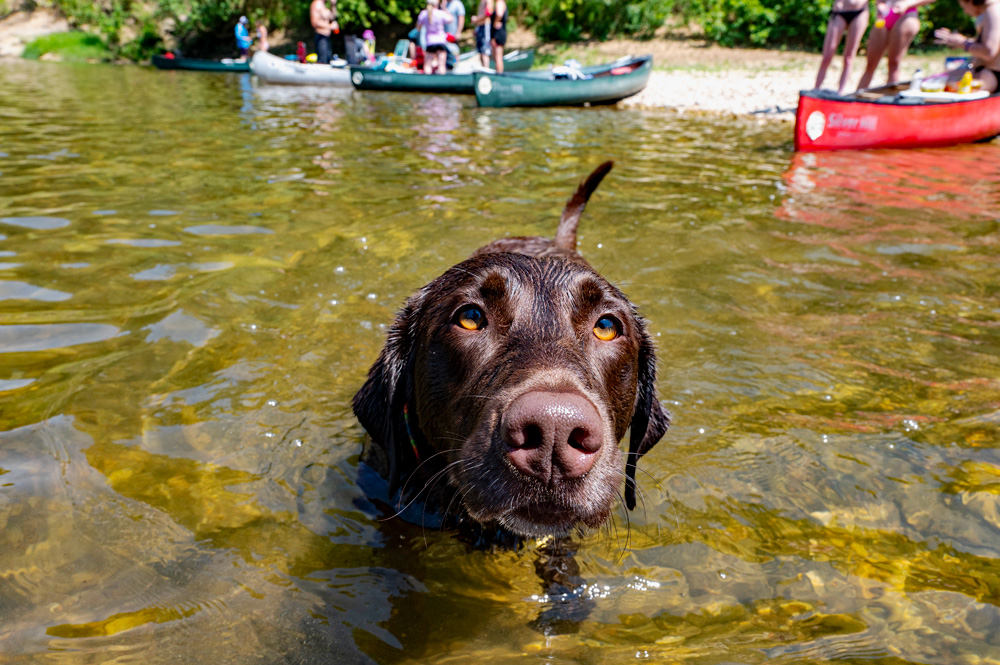With summer in full swing, Arkansas’s trails, rivers and parks are calling. Many outdoor enthusiasts bring their dogs along for the adventure, but the combination of heat, humidity and rugged terrain can pose serious risks for pets. Proper preparation is essential to ensure that your canine companion stays safe and healthy during summer outings.
Understand the Risks
Dogs regulate heat differently than humans. They primarily cool themselves through panting and limited sweating through their paws. When temperatures exceed 80 degrees — especially with high humidity — the risk of heat exhaustion or heatstroke increases dramatically. Dogs with short snouts, thick coats, or underlying health conditions are especially vulnerable.
Watch for warning signs such as heavy panting, drooling, glazed eyes, rapid heartbeat, disorientation, vomiting, or collapse. If any of these symptoms appear, stop activity immediately, move your dog to a shaded area, and begin cooling with water. In severe cases, seek veterinary care right away.

Plan Around the Heat
The best way to protect your dog is to avoid the hottest parts of the day. Schedule walks and hikes before 10 a.m. or after 4 p.m., when the sun is lower and surfaces are cooler. A good rule of thumb: if the pavement or trail is too hot for your hand after five seconds, it’s too hot for your dog’s paws.
Stick to shaded trails whenever possible. Many Arkansas parks, such as Lake Ouachita State Park and Petit Jean State Park, offer wooded routes that help shield pets from direct sunlight.
Stay Hydrated
Always bring more water than you think you’ll need. Dogs can become dehydrated quickly, especially during vigorous activity. Carry a collapsible bowl and offer water frequently. Some dogs prefer drinking from running streams, but don’t rely on natural sources alone — stagnant water can harbor harmful bacteria or blue-green algae.
If your dog shows signs of overheating, wet their paws, belly, and inner thighs with cool (not ice-cold) water. In remote areas, wet towels or creekside breaks can help lower body temperature.

Protect Paws and Skin
Hot pavement and rocky trails can cause painful burns. Test surfaces before walking, and consider dog booties on long or exposed routes. Never shave a double-coated dog, as their fur helps regulate body temperature and protect from sunburn. Apply pet-safe sunscreen to light-colored dogs or those with exposed skin, especially on the nose and ears.
Know the Rules and Terrain
Most Arkansas state parks and national park areas welcome leashed dogs, but it’s important to check specific regulations before visiting. Dogs are typically allowed on trails but are restricted from visitor centers, swimming beaches, and wildlife management zones.
In Hot Springs National Park, dogs can explore the full 26-mile trail system and even join the B.A.R.K. Ranger program, which encourages responsible pet ownership. Always keep your dog on a 6-foot leash and pack out waste to protect wildlife and other visitors.

Water Safety
Arkansas’s lakes and rivers offer great ways for dogs to cool off, but supervision is key. Not all dogs are strong swimmers, and swift currents can pose dangers. A well-fitted canine life vest is a smart investment for paddling trips or riverside camps. After swimming, rinse your dog’s coat to remove chemicals or bacteria and dry thoroughly to prevent skin irritation.
Emergency Preparation
Carry a pet-specific first aid kit on longer adventures. Include gauze, antiseptic wipes, tweezers for ticks, and a compact towel. Know the location of the nearest veterinary clinic, especially when venturing into remote areas. Save emergency numbers on your phone and let someone know your planned route.

The Bottom Line
Summer in Arkansas offers unforgettable outdoor opportunities for people and their pets. But dogs rely on their owners to keep them safe in extreme conditions. With a little planning — and by following common-sense precautions — you and your dog can enjoy the trails, rivers, and parks of the Natural State all summer long.
Sources:
- Arkansas State Parks
- National Park Service, Hot Springs B.A.R.K. Ranger Program
- American Veterinary Medical Association
- Cornell College of Veterinary Medicine
- The Spruce Pets
- Scenthound
- Humane Society of Colorado
- Time Magazine
- ASPCA
- Arizona Humane Society
All photos for this article were provided by the Arkansas Department of Parks, Heritage and Tourism (ADPHT).
This article was originally published on ArkansasOutside.com, your trusted source for outdoor news and updates in The Natural State. Unless otherwise credited, all photos included in this piece are the property of Arkansas Outside, LLC. We take pride in sharing the beauty and adventures of Arkansas through our lens—thank you for supporting our work!






